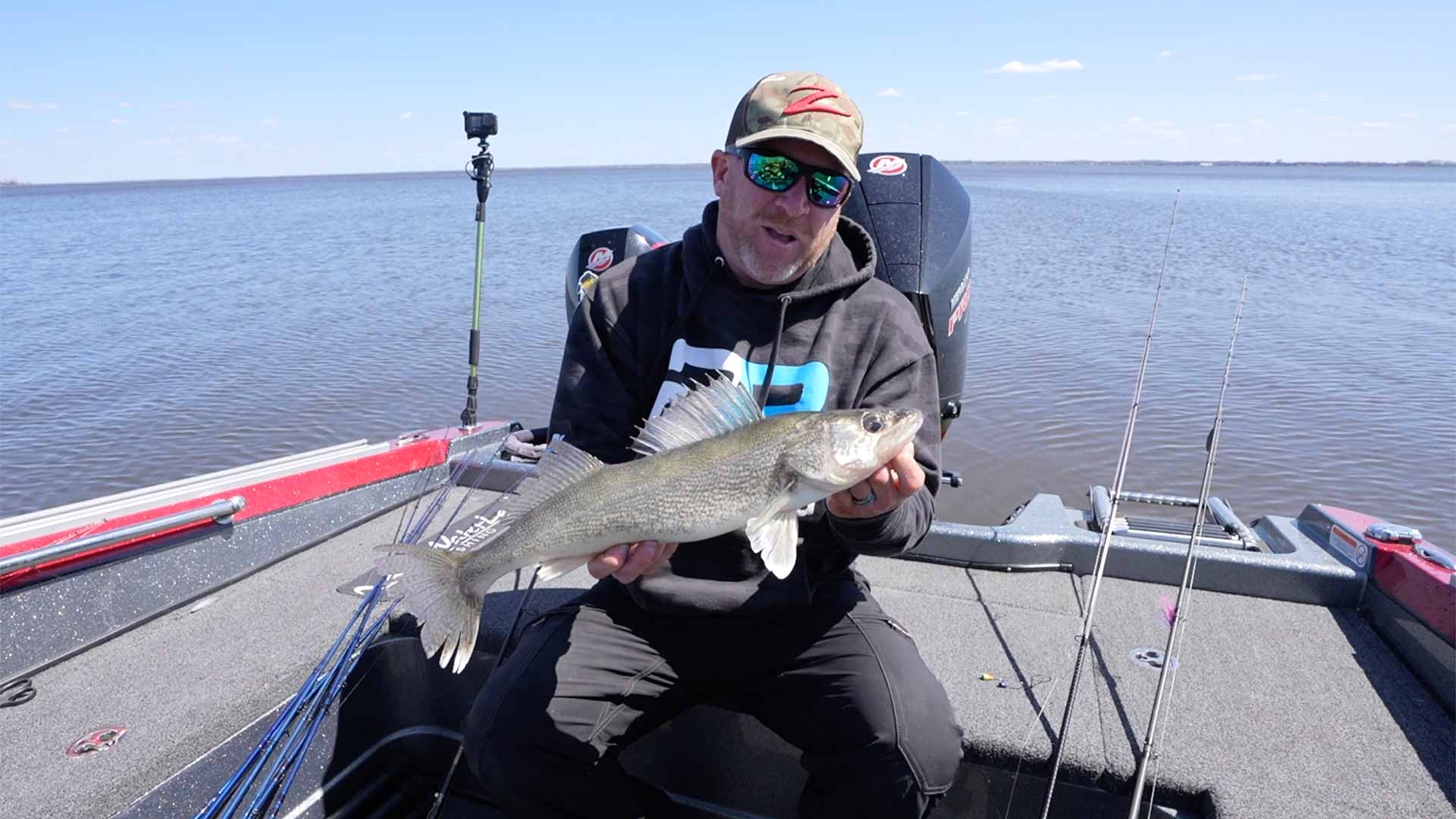Some of the best untapped walleye fishing happens in the weeds because most folks wanna “mark em” and are too afraid to roll up their sleeves and tackle the green stuff. Tom Neustrom breaks down spinner rigging walleye in the weeds.
Weeds tend to scare most walleye anglers away but truth be told there is often a large number of fish that hold in and along the weeds.
It all starts the ability to locate good weeds with your electronics and being able to determine what a “good weed” is. The weeds you want to look for are your tall broad-leafed weeds like cabbage. Once I find the weeds with my Humminbird you’ll want to see how tall they are off the bottom because that’s going to determine your speed and weight.
Spinner rigging for walleye in weeds can be a highly effective technique, but it can also be intimidating for some anglers. However, with a few systematic adjustments to your setup, you can greatly improve your success rate. In this article, I will share some tips and tricks that will help you become a more proficient spinner fisherman.
The Right Equipment
Having the right equipment is crucial when it comes to spinner rigging for walleye in weeds. Here are some key components to consider:
Rod and Reel
I prefer using a St. Croix Elite Legend Elite 7-footer with a softer tip. This rod has a soft action, which allows me to drop the rod to the fish when I get a bite. This is important because when you’re spinner fishing and you get a bite, you want to drop the rod to the fish. So, having a rod with a softer tip is essential.
Sinker and Bead Configuration
I recommend using a bullet sinker when spinner rigging in weeds. The bullet sinker slips through the weeds more easily, making it less likely to get snagged. Before the swivel, I also like to add a bead. This acts as a shock absorber, preventing the sinker from hitting the hook and potentially scaring away the fish. The bead configuration can vary, but I personally like to use five or six beads. This helps to position the spinner blade above the hook, ensuring a better hooking percentage.
Hook Size
When it comes to hook size, I prefer using a number one or a one on gold VMC hook with a long shank. The longer shank allows for better hooking and reduces the chances of the fish throwing the hook.
Minnow Presentation
Properly hooking your minnow is crucial for a successful spinner rigging setup. I recommend using a two to two and a half inch chub, golden shiner, or shiner. To hook the minnow, insert the hook through the mouth and bring it out through the gill. Then, turn the minnow and bring the point of the hook through the belly. This setup mimics the natural swimming direction of the minnow and greatly improves the hooking percentage.
Speed and Depth
When spinner rigging for walleye in weeds, speed and depth are important factors to consider. Here are some tips to help you optimize your presentation:
Speed
I typically set my speed at around 1.1 to 1.3 mph when spinner rigging. This speed allows the spinner to attract the attention of the fish without moving too fast. It’s important to maintain a consistent speed throughout your retrieve.
Depth
In shallow water, such as areas with cabbage beds, I usually run my spinner rig at depths of eight to twelve feet. To determine the depth, I use a fish finder with side imaging capabilities to locate the cabbage beds. This information helps me adjust my presentation and ensure that I’m running at the right depth.
Presentation Tips
To effectively present your spinner rig in weeds, here are some additional tips to keep in mind:
Weed Contact
As you retrieve your spinner rig, make sure to occasionally tick the weeds. This will create a more realistic presentation and entice the fish to strike. However, be careful not to get snagged in the weeds.
Top Edge of the Weeds
During the summer, when the water is warm, crappies and walleyes often feed near the top edge of the weeds. Positioning your spinner rig in this area can lead to great success. Pay attention to the depth of the cabbage beds and adjust your presentation accordingly.
Bait Options
While using a minnow is the traditional choice for spinner rigging, don’t be afraid to experiment with other baits. In hot weather, switching to a half crawler can be effective. It’s always a good idea to have both minnows and crawlers with you to adapt to changing conditions.
Spinner Box
To stay prepared and organized, consider building a spinner box. This will allow you to have a variety of spinner sizes, colors, beads, hooks, and weights readily available. Additionally, having extra components like swivels and line will ensure that you can quickly replace any damaged or lost parts.
Line Strength
Contrary to what some may think, using heavier line is beneficial when spinner rigging. I recommend using 14 to 17 pound test monofilament line. This heavier line reduces the chances of getting bit off by pike or other toothy predators.
[/et_pb_text][/et_pb_column][/et_pb_row][/et_pb_section]









